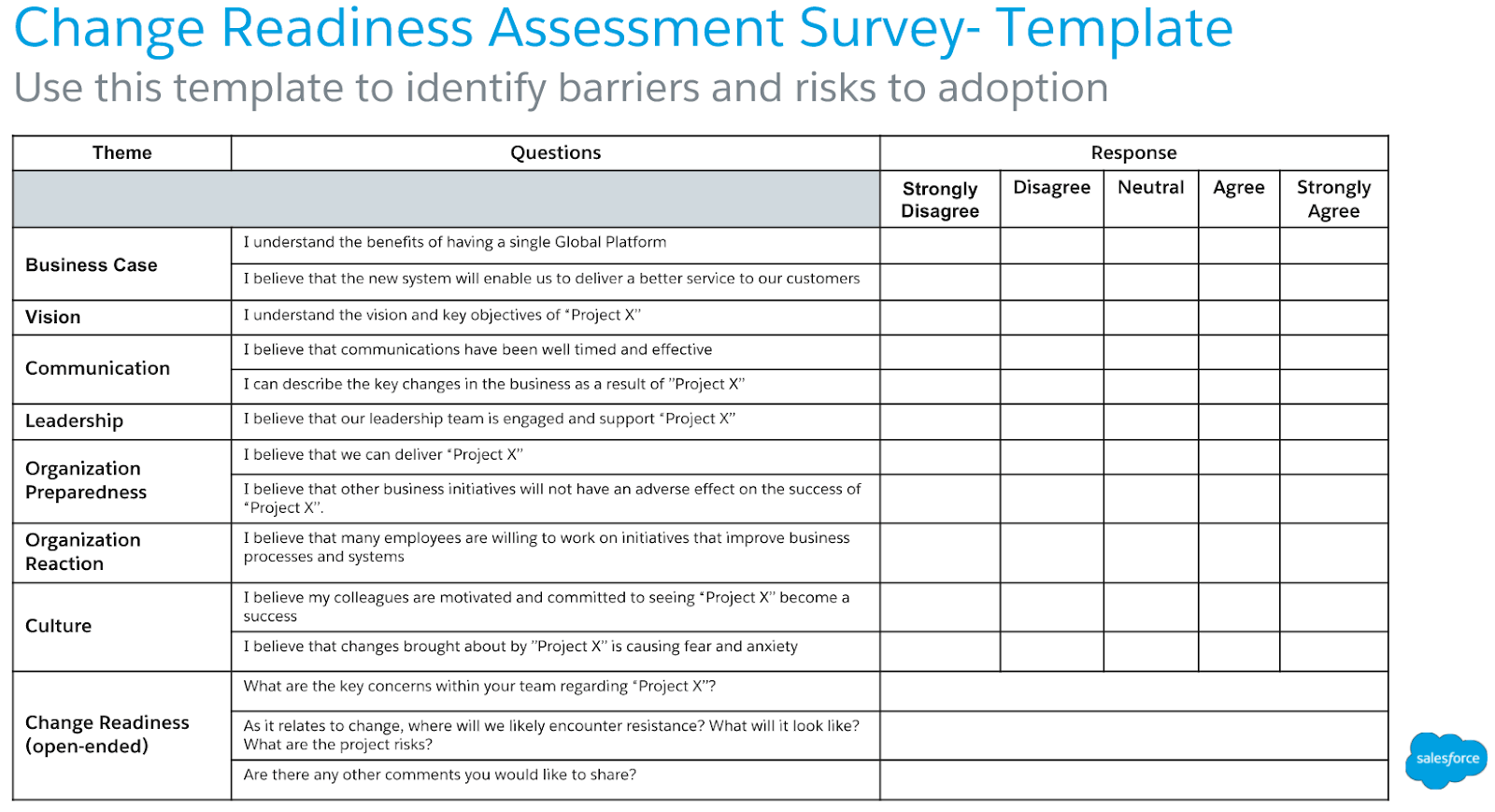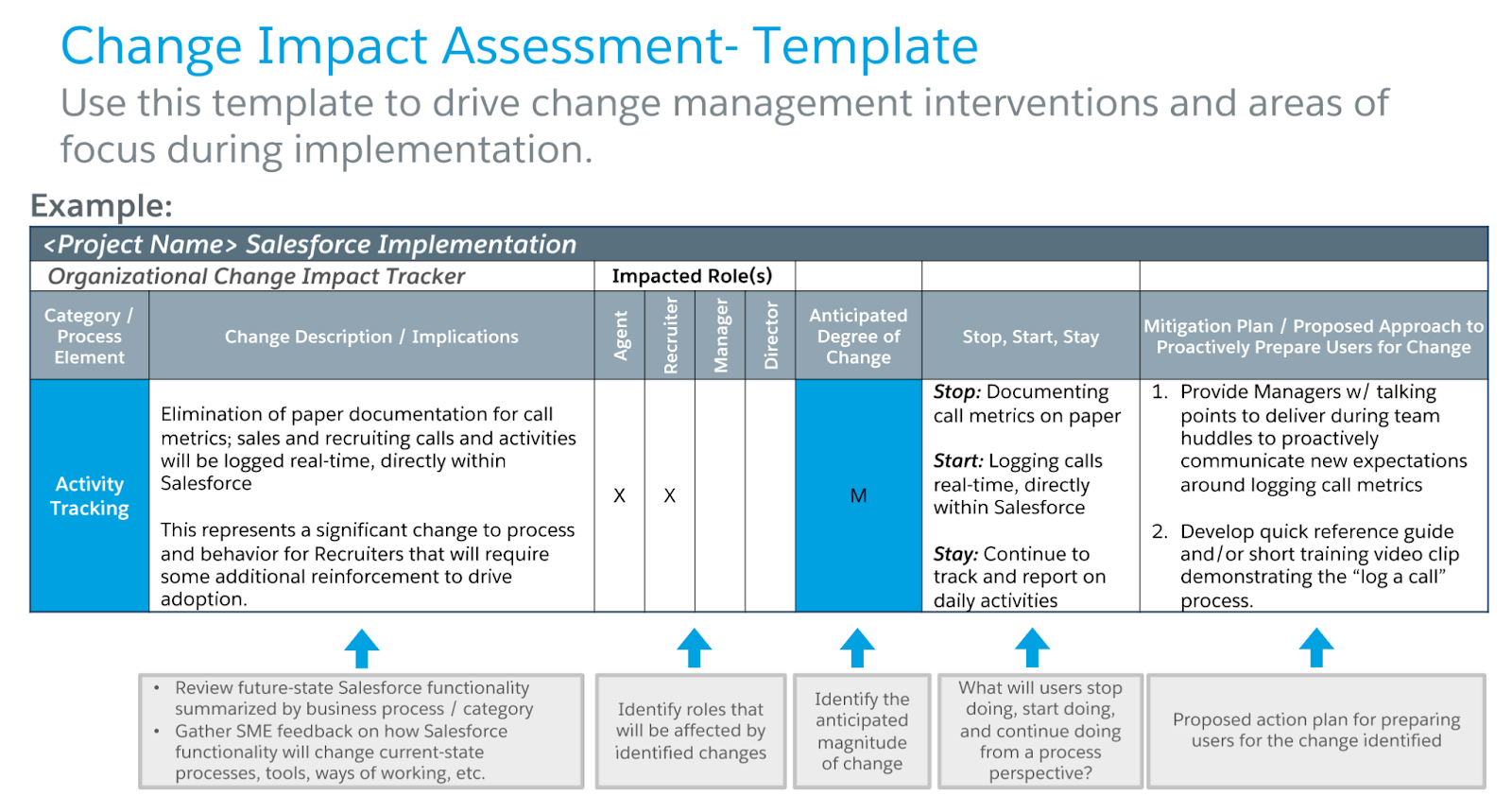
The What, Why, and How of Salesforce Change Management
If you are introducing new features or processes to a Salesforce instance, then you might make or break the system. In the contemporary business environment, a CRM like Salesforce has become the backbone of every sales team. They optimize their day-to-day tasks and win more deals thereby making more profits. But then, there is always space for improvement and change in a CRM and business process, isn’t it?
That’s when a change management process and strategy come into play.
In this article, we will cover what is Change Management, why should changes be managed effectively or their importance, and finally how it can be done. Let’s dive in
What Is Change Management?
A methodical approach is usually adopted by organizations involving both technology and employees to manage all the changes. This process is vital for organizations to run the processes smoothly and achieve their goals.
Salesforce Change Management is an umbrella term that includes all activities related to managing changes within the Salesforce instance. As and when the end-users start using the system, a lot of ideas or alternatives may pop up. These types of changes need to be collected, coordinated between the teams, and implemented periodically.
The three main areas of change management are:
Business Process: When making changes to a business process, management and stakeholder involvement is necessary. The changes list needs to be collected and prioritized based on a number of factors.
Technology: Following Agile business processes and Salesforce best practices while implementing changes could come in handy.
People: End-users adopting a change is important to a business, so communication is key.
If these three areas are not handled properly, there is a high chance of Salesforce project failure. Often the changes are handled in a reactive manner and not in a proactive fashion.
In the next section, we will understand the necessity of a change strategy and management.
![]() Don't forget to check out: Salesforce Kanban Board - All You Need to Know
Don't forget to check out: Salesforce Kanban Board - All You Need to Know
Why Is Change Management Necessary?
Change is inevitable. It can impact the whole business.
Usually, a CRM is used by businesses to optimize their daily schedules, increase their productivity, etc. However, if the change is not managed properly it can go entirely the other way and cause disruptions to the business. Sometimes the teams are not aware until a disruption happens and they just fix the issues.
Changes implemented wrongly can lead to system downtime, data corruption or inaccuracy, and issues with user adoption. The key reasons why a Salesforce project fails are
- Lack of clear business goals, processes
- Poor stakeholder management, leadership
- Lack of involvement in the project
- Lack of training and documentation of the change
Therefore a strategy which details all the above is essential for embracing changes. Being prepared for the change is the first step to combat all the issues mentioned above and many more.
How to Be Prepared for Change?
There are 9 steps for effectively handling changes as per the Salesforce report. Also, we have included links to useful templates that can be used by your team in this process.
1. Strategy
There might be an endless list of ideas and changes that the end-users and admins want to implement. However, the change requests need to be evaluated based on multiple criteria like are they aligning with our business goals? Is the level of effort behind this change request is more? etc, The steering committee could make a list and work on this.
The change readiness survey template could be used to understand the pulse of your employees or end-users before proceeding with implementing changes. You could identify the barriers or thoughts that the end-users have to adopt changes.
2. Sponsorship
An executive sponsor is vital for this whole process. They will help to set the business objectives, communicate the change to a wider team and drive user adoption. They can be a guide to this whole process.
3. Collect Input from End-user
Receiving feedback from your employees is a must. Some of the ways to do it are chatter group, ideas feature of Salesforce, using the case object. You could capture ideas, feedback, ask questions, post-training links, etc to get users motivated and involved.
4. Scope Definition
After the ideas are obtained, a table needs to be maintained with the scope and impact of every idea. If multiple teams are involved or impacted by a change, then they need to be consulted to understand the effect of the change.
Impact Assessment template from Salesforce could be used to understand the impact of a change from an end user’s perspective and proceed further.
5. Prioritize
You need to pick certain ideas and implement the changes. You can reserve some for later and reject the rest. If you understand the impact of a change request, this decision is then a cakewalk. An application can be used to track the changes and their progress.
![]() Check out another amazing blog by Cloudideas here: The Ultimate Guide to Salesforce Implementation in 2021
Check out another amazing blog by Cloudideas here: The Ultimate Guide to Salesforce Implementation in 2021
6. Configuration and Testing
You might want to test the changes in your sandbox system to avoid any surprises or downtime in the production system. This could be done in a repetitive fashion until the team is fully confident that the change can be pushed to the production instance.
7. Clear Communication and Training
Setting expectations right for the end-users as to when the change will be released and how to handle them is essential to avoid confusion. Based on the complexity of the change, you could send an email to employees, set up a hands-on session, or train your team on the new changes.
A communication plan could be helpful here to track who is responsible for which activity.
8. Deployment
Once your new release is configured in Sandbox, tested, communicated to all then it’s high time you push the release to the production environment.
9. Support
After the change is implemented, check if it's implemented right by surveying users or interviewing a specific set of users. You need to provide a forum for raising queries or support requests to your end-users.
Final Thoughts
Effective change management could help organizations make smarter decisions, increase profitability, user adoption, and what not?
“You can’t do today’s job with yesterday’s methods and be in business tomorrow” - Unknown
Resistance to change is often a barrier to businesses and it can be broken with a proper strategy, communication plan, and training in place.
CloudIdeas will help you with optimizing your change management process, you can take our help. Just book a call today and get started with our Experts!








Responses